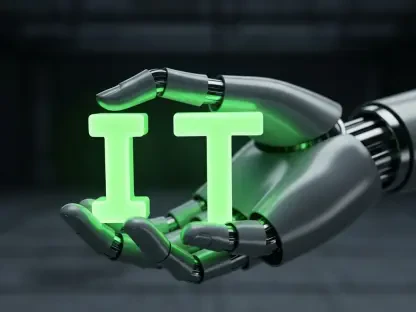Today, we’re thrilled to sit down with Vijay Raina, a renowned expert in enterprise SaaS technology and software design, who brings a unique perspective on cutting-edge climate technologies. As the conversation around sustainable energy solutions intensifies, Vijay offers invaluable insights into how innovations like superconducting cables can revolutionize data centers—a sector grappling with skyrocketing power demands. Our discussion dives into the intersection of advanced tech and environmental impact, exploring how these solutions address space constraints, energy efficiency, and the urgent needs of modern infrastructure.
How did you first become interested in the potential of superconducting technology for data centers, and what makes this field so critical right now?
I’ve always been fascinated by technologies that push the boundaries of efficiency, and superconductors caught my attention due to their ability to transmit electricity with zero energy loss. Data centers are at a tipping point—power demands have surged from tens of kilowatts to hundreds in just a few years, and we’re now looking at multi-megawatt racks on the horizon. This exponential growth, driven largely by AI and cloud computing, makes energy efficiency and space optimization non-negotiable. Superconductors offer a way to tackle these challenges head-on, which is why I believe this technology is not just relevant but essential for the future of digital infrastructure.
What are the main factors driving this massive increase in power needs for data centers, and how is the industry responding?
The primary driver is the explosion of AI workloads and machine learning models that require immense computational power. These systems need high-density racks that consume far more energy than traditional setups. Additionally, the global push for cloud services means data centers are scaling rapidly to keep up with demand. Right now, the industry is in a reactive mode—many developers are redesigning facilities to accommodate higher power loads, often struggling with grid interconnection issues and on-site energy constraints. There’s a scramble to find innovative solutions, and that’s where technologies like superconductors come into play as potential game-changers.
Can you explain how superconducting cables differ from traditional copper cables and what unique benefits they bring to data centers?
Absolutely. Superconducting cables conduct electricity with no resistance, meaning there’s zero energy loss during transmission, unlike copper cables where heat dissipation is a constant issue. This efficiency translates to less waste and lower cooling costs, which are huge concerns in data centers. Moreover, superconductors can carry significantly more power in a much smaller footprint—think 20 times less space than copper while transmitting power five times farther. This is critical in facilities where every square inch matters, and it helps manage the heat load that high-power racks generate.
How do you address the challenge of maintaining the ultra-low temperatures required for superconductors in a data center environment?
It’s definitely a hurdle, as superconductors need to be kept at temperatures around -196°C using liquid nitrogen. The solution lies in designing robust cooling systems that integrate seamlessly with the cables. These systems use insulated jackets to contain the coolant and ensure the material stays at the required temperature without interfering with the surrounding environment. It’s a complex engineering feat, but advancements in cryogenics have made it feasible to deploy these systems even in the confined, high-activity spaces of data centers.
Can you walk us through how the transition from superconducting to copper cables is managed within a facility?
Certainly. The transition happens through specialized termination boxes at the end of the superconducting cables. These boxes are designed to safely and efficiently shift the power from the superconductor, which operates at ultra-low temperatures, to traditional copper cables that connect to the racks or other equipment. It’s a critical component because it ensures compatibility with existing infrastructure while maintaining the efficiency gains of the superconducting system. The goal is to make this integration as smooth as possible so data center operators don’t need to overhaul their entire setup.
How does the space-saving aspect of superconducting cables impact the overall design and operation of data centers?
The space-saving benefit is transformative. When you’re using cables that take up a fraction of the space of copper—20 times less, to be exact—it opens up possibilities for denser rack configurations and more efficient layouts. Data centers can either scale up their capacity within the same footprint or reduce the physical size of new builds, which cuts down on real estate costs. It also means less clutter and better airflow management, which indirectly helps with cooling—a persistent challenge in these facilities.
What does the ability to carry power farther mean for the efficiency and layout of data center campuses?
Carrying power five times farther with superconductors allows for more flexible campus designs. You can centralize power sources and distribute electricity over longer distances without losing efficiency, which reduces the need for multiple power substations within a facility. This not only streamlines the layout but also cuts down on infrastructure costs and energy losses that occur with shorter-range copper systems. It’s a huge advantage for large-scale data center campuses that are often constrained by how far they can transmit power effectively.
Why do you think the data center industry is more receptive to adopting superconducting technology compared to other sectors like utilities?
The data center industry operates at a breakneck pace—there’s intense competitive pressure to stay ahead, especially with AI and cloud services driving demand. They’re desperate for solutions to power and space challenges today, not a decade from now. In contrast, sectors like utilities are more cautious and slower to adopt new tech due to regulatory hurdles and long planning cycles. Data center operators are willing to take calculated risks on innovations like superconductors because the stakes of falling behind are so high.
What excites you most about the potential of simulating and testing superconducting solutions in controlled environments before full deployment?
Simulations are incredibly exciting because they let us validate the technology under real-world conditions without the risks of a live rollout. Building a simulated data center environment allows us to test variables like power loads, cooling efficiency, and system integration in a controlled setting. We can push the technology to its limits—mimicking multi-megawatt racks or extreme heat scenarios—and identify weaknesses before deployment. It’s a critical step that builds confidence in the solution and ensures we’re delivering something reliable to customers.
Looking ahead, what is your forecast for the role of superconducting technology in shaping the future of data centers and beyond?
I’m incredibly optimistic about superconductors. In the near term, I see them becoming a cornerstone for high-density data centers, especially as power demands continue to climb with AI and other technologies. They’ll enable more sustainable, efficient facilities that can keep up with growth without ballooning energy costs or footprints. Beyond data centers, I believe superconductors will eventually play a major role in utility grids and renewable energy systems as the tech matures and adoption barriers decrease. It’s a transformative solution that could redefine how we think about power transmission across industries in the next decade or two.









